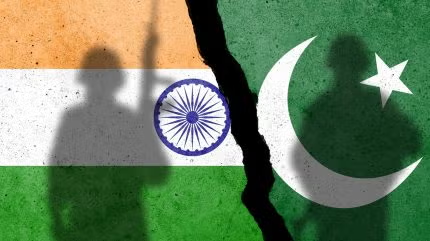New Delhi — The recent terror attack in Pahalgam has sparked serious concerns across the nation, not only because of the brutality of the assault but also due to the intricate geopolitical and strategic backdrop that appears to have preceded it. A deeper look at recent events paints a troubling picture of potential international and domestic coordination aimed at destabilizing India.
Chapter 1: A Pattern Emerges
Several developments in the weeks leading up to the Pahalgam attack have now drawn attention from intelligence and policy analysts:
-
US Aid to Pakistan: Two weeks ago, the United States approved $400 million in aid to Pakistan. The purpose of this aid is now under scrutiny.

-
Pakistani Delegation to Saudi Arabia: Just 15 days before the attack, both the Pakistani Prime Minister and Army Chief made an urgent visit to Saudi Arabia. The reason behind the sudden diplomacy is yet to be clearly explained.
-
POK Terror Meeting: A month earlier, top Hamas operatives reportedly met with Pakistan-based terror leaders in Pakistan-occupied Kashmir. Sources believe the gathering was strategic in nature, possibly plotting transnational militant activity.
-
Anti-India Rhetoric: Three days before the attack, Pakistan’s army chief issued strongly worded statements targeting India, Hindus, and Prime Minister Narendra Modi.
Chapter 2: The Pahalgam Attack Unfolds
On the day of the attack, militants targeted Hindu pilgrims in Pahalgam — a rare and deliberate move aimed at creating deep communal unrest.
-
Targeted Intentions: Attackers reportedly stated, “Tell your Modi — we are killing Hindus on purpose.” Notably, the statement omitted reference to the Indian Army or police, appearing calculated to provoke communal outrage and frame the attack as a personal challenge to PM Modi.
-
Timing and Symbolism: The attack occurred on a day when US Vice President JD Vance was in India, while PM Modi was on a state visit to Saudi Arabia. The convergence of international diplomacy and terror raises questions about possible coordination.
-
Unusual Political Movements: A young Indian political figure based in Bangkok had visited the US just a week prior to the attack. While not confirmed, some speculate this could be connected to future political narratives or influence campaigns.

-
Western Nations’ Stance: Multiple Western nations — including the US, Canada, UK, France, and Germany — stated that “India is free to act as it sees fit.” Some analysts interpret this as indirect encouragement for military escalation, which could embroil India in a prolonged conflict and diminish its global focus.
-
Opposition Strategy Shift: Interestingly, some opposition parties that previously demanded proof of India’s Balakot strike are now vocal in backing “any government step,” raising eyebrows. Is this solidarity or a strategic push to steer India into hasty retaliation?
-
Pakistan’s Red Line on Water: Pakistan has publicly warned that any move by India to restrict water flow will be seen as an act of war, indicating they are prepared and awaiting a trigger.
The Broader Conspiracy?
Some strategic thinkers believe this chain of events is not coincidental but part of a well-planned effort to push India into war — a move that could derail economic momentum, polarize society, and undermine the current leadership. Voices in the intelligence community caution against falling into what they describe as a “trap” orchestrated by both external forces and internal actors with vested interests.
Internal Threats – The ‘Half Front’
The late Chief of Defence Staff General Bipin Rawat had warned of a “half front” emerging within the country — referring to domestic actors, political factions, and foreign-influenced lobbies that, knowingly or unknowingly, weaken India’s position from within.
Movements such as the CAA protests, Shaheen Bagh sit-ins, and coordinated opposition to national security laws are being retrospectively analyzed as potential precursors or tests for larger destabilization campaigns.
Conclusion: War May Not Be the Answer
Experts urge caution and strategic patience. While India’s military is fully capable of handling Pakistan, China, and Bangladesh together, a civil conflict or nationwide communal unrest could prove far more destructive.
In this context, calls for immediate war or retaliation must be weighed against the long-term stability and unity of the nation. The government, led by Prime Minister Modi, is reportedly considering all options — including non-military measures such as water control and international diplomatic isolation of Pakistan.
As tensions rise, India faces a critical choice — to react emotionally or to act with strategic clarity.





